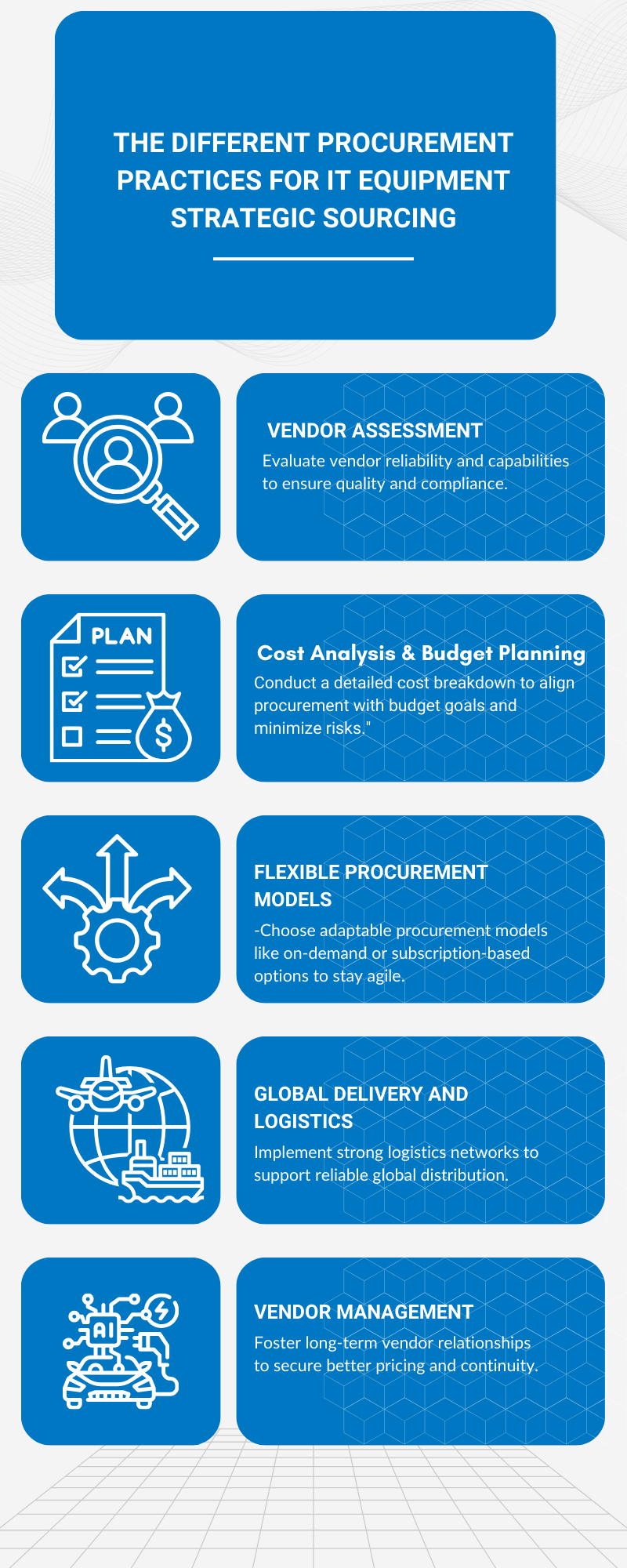Global IT Sourcing: Key Procurement Practices to Cut Costs and Enhance Efficiency

In today’s fast-paced digital landscape, global IT sourcing has become a strategic imperative for enterprises striving to stay competitive. Leveraging resources and expertise from around the world allows businesses to access cutting-edge technologies and talent, streamline operations, and scale rapidly. However, effective IT procurement practices are key to ensuring these partnerships deliver value. Efficient, cost-effective procurement not only enhances operational efficiency but also reduces overall IT costs, optimizing ROI. In a market where agility is crucial, mastering IT sourcing practices empowers enterprises to remain flexible, innovative, and resilient.
Understanding Global IT Sourcing
Global IT sourcing involves acquiring IT services, software, and hardware from international markets, allowing organizations to access a wide range of talent. This method enables businesses to find specialized expertise and innovative technologies that may not be available locally. By sourcing on a global scale, companies can improve their agility and competitiveness in a connected marketplace.
Strategic Sourcing for Cost Efficiency
Strategic sourcing in IT procurement is a data-driven approach to selecting and managing suppliers, with the goal of maximizing value while minimizing costs. Unlike traditional procurement methods, which often focus solely on immediate purchases, strategic sourcing prioritizes long-term partnerships that align vendor capabilities with the organization’s goals. This proactive method involves analyzing market trends and assessing vendor quality to ensure that businesses make the most of their IT investments.
Core Benefits:
Long-Term Savings: Strategic sourcing can lead to significant savings over time by optimizing supplier selection and negotiating favorable contract terms.
Enhanced Quality: By prioritizing dependable vendors, organizations can improve the overall quality of the services and products they receive.
Risk Management: This approach reduces dependence on a single supplier, increasing stability and resilience against market fluctuations.
Tactics for Strategic Sourcing:
Effective strategic sourcing starts with a thorough market analysis to identify the best suppliers. Organizations should establish clear procurement goals and consider the total cost of ownership (TCO), which encompasses not just purchase costs but also ongoing maintenance and support expenses.
By embracing these practices, businesses can create a more efficient procurement process that supports their long-term objectives and drives overall success.

Key Procurement Practices to Cut Costs
Vendor Selection and Management:
Effective IT procurement begins with thoughtful vendor selection and management. Choosing reliable suppliers who offer competitive pricing is essential for controlling costs without compromising quality. Developing long-term relationships with trusted vendors can lead to better pricing, flexible terms, and stronger commitments to service. Regular assessments and negotiations with these suppliers help maintain favorable conditions and ensure that costs stay in line with market trends, allowing for continued savings.
Adopting Flexible Procurement Models:
To boost cost efficiency, businesses should consider adopting flexible procurement models such as leasing, renting, or outright purchasing. Each option comes with unique advantages: for example, renting IT equipment can be especially beneficial for organizations facing fluctuating technology needs or constraints on their budgets. This model helps avoid large upfront investments and allows companies to upgrade or scale their technology as necessary, reducing capital expenditures and minimizing the risk of obsolescence.
Global Delivery and Logistics:
Efficient management of global delivery and logistics is another crucial strategy for cutting costs. By optimizing delivery timelines and minimizing logistical delays, companies can lower shipping expenses and prevent potential downtime. Partnering with logistics providers that understand international regulations can expedite deliveries, streamline the supply chain, and uncover hidden costs, ensuring timely access to essential IT resources.
Renting vs. Buying IT Equipment: A Cost-Efficient Solution
When it comes to IT equipment, renting often offers greater financial flexibility than purchasing. While buying involves high upfront costs and depreciation over time, renting provides a cost-effective alternative by minimizing initial expenses and allowing companies to allocate funds elsewhere. Renting also helps businesses avoid the risks associated with rapid technological obsolescence, as they can upgrade equipment more frequently and stay current without additional capital investment.
How Compulease Networks Support Cost Efficiency
Compulease Networks specializes in providing tailored rental solutions, helping businesses remain agile and cost-efficient. Their rental offerings allow organizations to access the latest technology with flexible terms, making it easy to scale up or down as business needs change. With Compulease, companies can optimize budgets and reduce long-term costs while maintaining cutting-edge IT infrastructure.
Conclusion
In today’s competitive landscape, effective procurement practices are essential for reducing costs and improving efficiency in global IT sourcing. Strategic approaches like renting equipment and selecting reliable vendors enable companies to maximize value and foster sustainable growth. To elevate your IT sourcing strategy, reach out to compulease Networks for comprehensive support.
